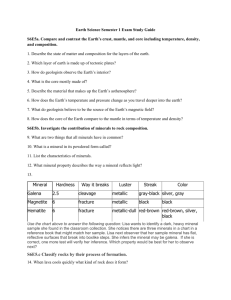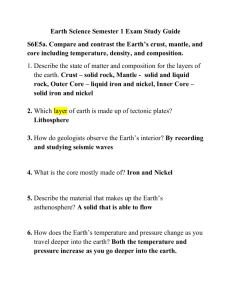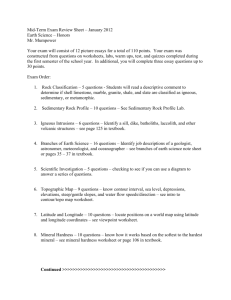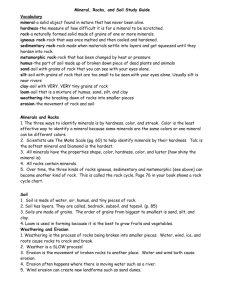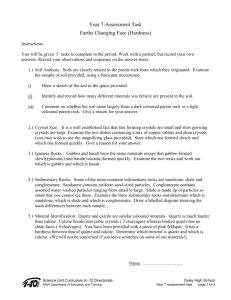Rocks, Minerals, and Soil Quiz Document (5 pts. each) Do NOT write
advertisement
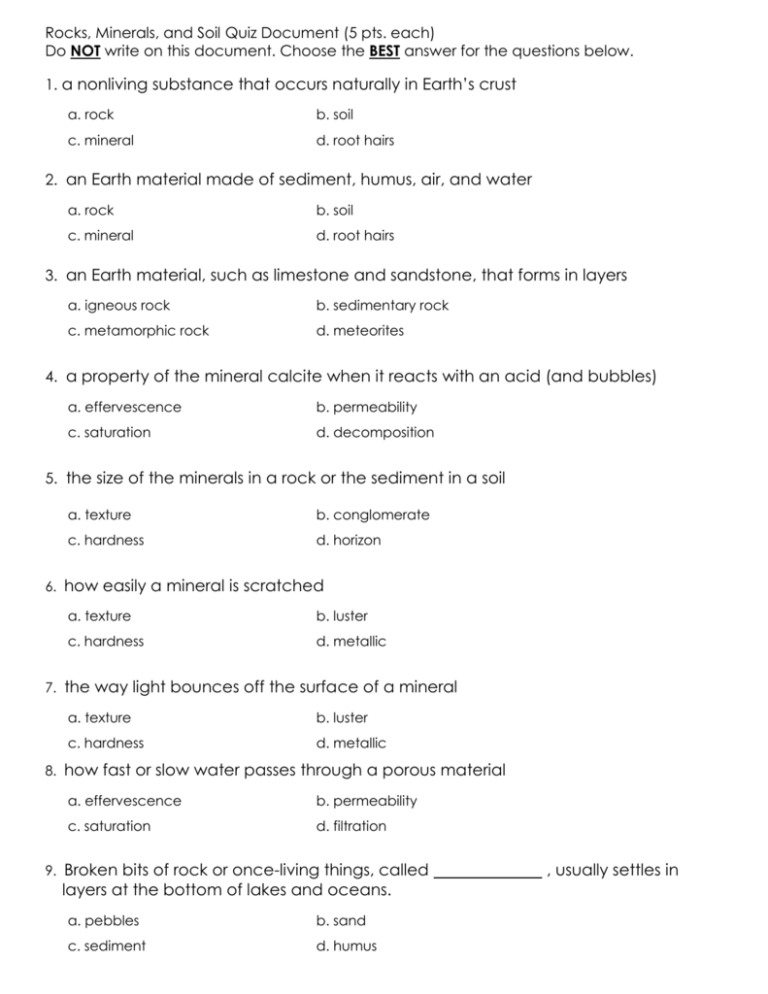
Rocks, Minerals, and Soil Quiz Document (5 pts. each) Do NOT write on this document. Choose the BEST answer for the questions below. 1. a nonliving substance that occurs naturally in Earth’s crust a. rock b. soil c. mineral d. root hairs 2. an Earth material made of sediment, humus, air, and water a. rock b. soil c. mineral d. root hairs 3. an Earth material, such as limestone and sandstone, that forms in layers a. igneous rock b. sedimentary rock c. metamorphic rock d. meteorites 4. a property of the mineral calcite when it reacts with an acid (and bubbles) a. effervescence b. permeability c. saturation d. decomposition 5. the size of the minerals in a rock or the sediment in a soil a. texture b. conglomerate c. hardness d. horizon 6. how easily a mineral is scratched a. texture b. luster c. hardness d. metallic 7. the way light bounces off the surface of a mineral a. texture b. luster c. hardness d. metallic 8. how fast or slow water passes through a porous material a. effervescence b. permeability c. saturation d. filtration 9. Broken bits of rock or once-living things, called layers at the bottom of lakes and oceans. a. pebbles b. sand c. sediment d. humus , usually settles in Rocks, Minerals, and Soil Quiz Document (5 pts. each) Do NOT write on this document. Choose the BEST answer for the questions below. 10. Soil is a mixture of small pieces of rock and decayed plant and animal matter, called… a. pebbles b. sand c. sediment d. humus 11. tiny holes that air or water can move through in the soil a. sponges pockets b. pore spaces c. filtration passages d. spores 12. Soil forms in layers called a. piles b. horizons c. layers d. geological epochs 13. Rock which forms from cooling molten rock a. metamorphic b. sedimentary c. conglomerate d. igneous 14. When does a mineral scratch another mineral? a. when it has a lower hardness than the other mineral b. when it has a higher hardness than the other mineral c. when it has a darker color than the other mineral d. when it has a more metallic luster than the other mineral 15. Which is indicative of soil horizon A (topsoil) a. a layer rich in humus and minerals b. often lighter and harder c. layer right above bedrock d. none of these 16. On the back of your test, explain how wind and water helps form soil (10 points).
